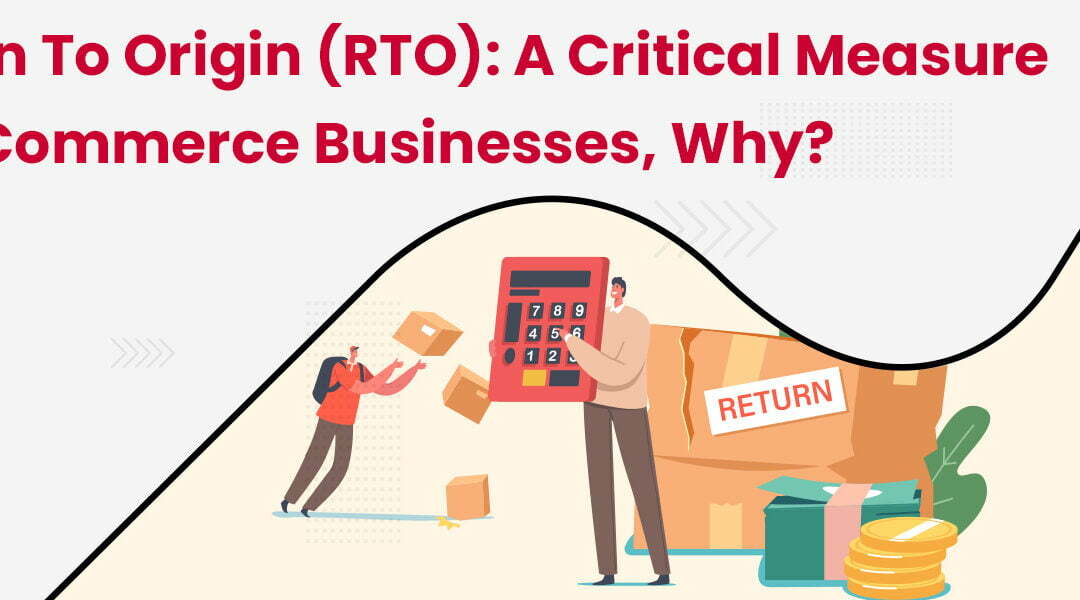The robustness of a business is determined by how well it can manage to provide its products and services at the right price, time, and quality. In today’s cutthroat competitive world, eCommerce businesses are often up against their peers from different geographical regions. It makes perfect sense for a company to expand its operations geographically, which would allow them the advantages of quickly reaching out to more customers and building good word of mouth for the brand. But, managers also need to keep in mind that this geographic expanse may come with risks like additional costs associated with logistics, longer delivery time than expected, problems with adjusting the inventory levels to match customer needs at each location, etc. That’s why it makes sense to think about Return to Origin (RTO) before calculating revenue and profits.
So, this blog will give you deep and clear insight into an RTO and its importance in an eCommerce business. Now, let’s get started.
What is RTO?
Suppose a retailer or an eCommerce platform sells its products in several geographic locations. In that case, the return shipment of products to a single location (either same as the customer’s shipping destination or other) is defined as Return to Origin (RTO).
A business may claim that it provides free shipping for orders above a specific amount. In such cases, the return shipment of any item may not be covered under RTO.
RTO
Received Quantity – Shipped Quantity + Lost Item = Total Quantity
Where Received Quantity = Quantity of items received in returns minus quantity sent to customers.
Shipped Quantity = Quantity shipped to customers.
Lost Item = Quantities lost during the shipping process
So, the Return to Origin (RTO) is defined as the total quantity of items sent back to a retailer by the customers minus the total quantity of items shipped out to customers and loss during shipping.
How is RTO Important in the eCommerce Business?
The Return to Origin (RTO) helps understand customers’ return behavior and their shopping patterns. Based on the quantity shipped out to customers and received back from them, you can decide how many stocks or inventory to keep within your store, leading to a cost-effective business model.
eCommerce businesses typically do not charge additional delivery or return charges to customers, and RTO is a helpful measure in such cases. It indicates what percentage of items sold gets returned and how much needs to be reordered, so business owners can negotiate better discounts with manufacturers for replenishing stocks.
Also, Return to Origin (RTO) helps retailers estimate their websites’ future revenue.
For example, suppose a website ships items worth $100k to its customers across the country and $20k items are returned due to some issue. In that case, it may be assumed that $80k is the amount that the business would have spent on replenishing lost inventory. So, once all of these transactions are completed, the website would receive an additional $80k, leading to an increase in revenue and profits.
Benefits of RTO Measurement for eCommerce Business
1) Calculate Accurate ROI
You can accurately calculate your eCommerce business’s return on investment if you have a clear idea about how many products are being returned or lost during shipping.
2) Makes Business Decisions Easier
It helps retailers know what percentage of items are being returned by customers, which allows them to make a better business decision related to reordering, cost negotiation with suppliers, and more.
3) Helps to Plan Future Revenue
Clear-cut details of returned items and those that will need to be reordered along with accurate quantification of how much a business would have spent on replenishing lost inventory help companies estimate their future revenue accurately. So, the Return to Origin (RTO) is a critical measure to calculate the payment and profits of any e-commerce business.
4) Improve Customer Retention
An increased number of return cases may lead to poor ratings among customers, which in turn might affect future sales for any eCommerce business. So, the Return to Origin (RTO) is a quick way to maintain quality standards and enhance future sales.
5) Tracing the Reasons Behind Returns
The quantity sent out and returned to a business can indicate customers’ satisfaction level with the products/services, pricing policies, quality, etc. are offered by any eCommerce business, which helps companies to take immediate corrective measures.
6) Identify the Products that are Likely to be Returned
The Return to Origin (RTO) can help you keep track of the products getting returned to your store. So, it becomes easy for businesses to identify whether or not certain items should be kept in stock.
7) Boost Customer Satisfaction & Brand Loyalty
The Return to Origin (RTO) indicates how customers are satisfied or dissatisfied with the products/services offered by an eCommerce business. This data can be used to enhance future sales.
8) Open up New Markets
The Return to Origin (RTO) offers a clear picture of the percentage of items returned after purchase. This, in turn, helps companies to identify specific underserved market segments that they can target easily.
9) Reduce Costs
The Return to Origin (RTO) is an effective tool that lets you figure out the number of items getting returned and the amount spent on their replacement, which ultimately reduces your cost.
10) Determines Warranty Claims
The Return to Origin (RTO) helps you calculate the percentage of returned items due to manufacturing defects to make an informed decision on how much money should be spent on product replacement.
11) Assess Supplier Performance
A retailer can assess their supplier’s performance by looking at how many items are being returned and then coming up with a better business plan to improve their performance.
12) Assess your Business Performance
You can develop an effective business plan to improve the Return to Origin (RTO) by studying how much money is being spent on reordering, quality checks, refunds, etc.
13) Improve Customer Service
If customers are satisfied with the services offered by any eCommerce business-like prompt refunds, product replacement, etc., the Return-to-Origin (RTO) will decrease with time as more customers buy from your business.
14) Provides Feedback for Websites
The Return to Origin (RTO) is a good indicator of a website’s performance because it suggests how well an online store is working out in terms of reducing returns and increasing sales.
15) Helps Predict Future Sales
By knowing which items got returned and how much value is lost, eCommerce store owners can plan their future sales in a better way.
16) Helps to Calculate Online Margin
The Return to Origin (RTO) helps you calculate your return on investment (ROI) and determine whether or not an online business is profitable.
17) Increase Average Order Size
eCommerce businesses can increase average order size by reducing Return to Origin (RTO), increasing their profitability.
18) Improve Inventory Management
An eCommerce business can better understand its inventory needs and purchase the products that are likely to be sold. So, considering the Return to Origin (RTO), they can improve their inventory management.
19) Enhance the Efforts of Marketing
The Return to Origin (RTO) can help eCommerce business owners determine which items are attractive to customers and need a few changes in price, color, size, etc. This data can be used to improve marketing efforts.
20) Gain Access to Essential Data
eCommerce businesses can gain access to valuable Return to Origin (RTO) data that makes it possible to improve their business operations.
Final Thoughts
The Return to Origin (RTO) indicates how customers are satisfied or dissatisfied with the products/services offered by any eCommerce business. This data can be used to enhance future sales, reduce costs, determine warranty claims, assess supplier performance and increase average order size.
So, it becomes easy for businesses to identify whether or not they are moving in the right direction or not. Ultimately, it makes Return to Origin (RTO) an essential indicator of eCommerce business performance and cannot be ignored by any retailer. However, it’s important to have an NDR panel if you want to bring down your RTO percentage. A shipping aggregator like NimbusPost can provide you with an advanced NDR panel on their shipping platform that helps your track fake delivery reports in real-time and save time and energy to manage the same.




